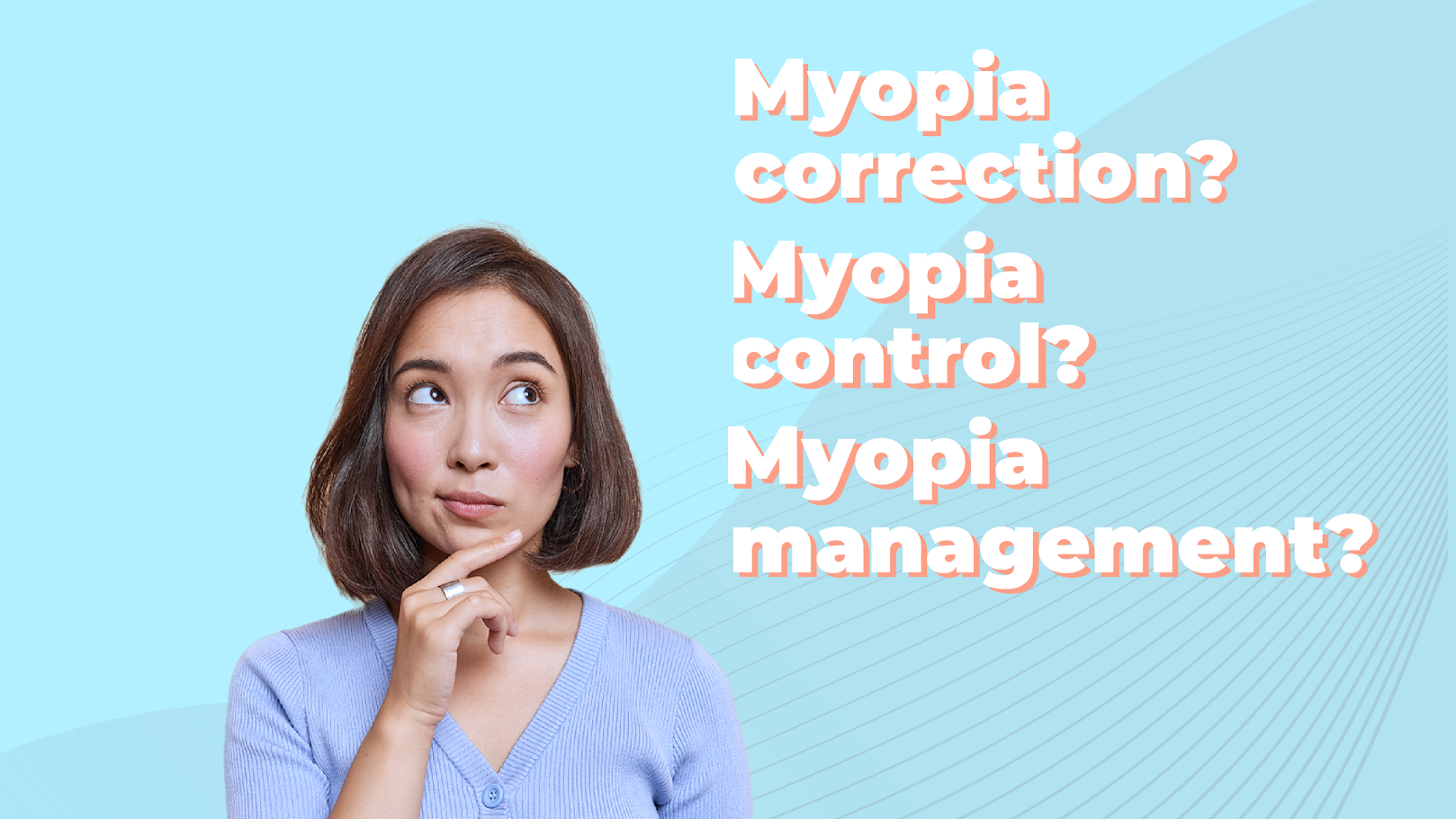Three myopia terms, three different meanings. The IMI consensus clears it up for practitioners and patients.
As childhood myopia continues its global rise, confusion persists over the terms “myopia correction,” “myopia control” and “myopia management.” These words are often used interchangeably—but they’re not the same.
Recognizing the urgent need for clarity in how these terms are used in both clinical practice and public communication, the International Myopia Institute (IMI) has published a consensus statement in the journal Investigative Ophthalmology & Visual Science.1 This document brings much-needed guidance to the field, offering clear definitions and recommended usage of each term.
This clarity is not just academic. The language eye care professionals use directly shapes how parents understand their child’s condition—and whether they pursue meaningful, proactive care.
Let’s break down what each of these terms really means—and why using them correctly matters more than ever.
READ MORE: WSPOS Myopia Consensus Statement 2025: What Practitioners Need to Know
Myopia correction: Fixing the blur, not the problem
Let’s start with the most familiar idea: myopia correction. This is what happens when a person gets a pair of glasses or contact lenses to help them see clearly at a distance. It’s simple and effective—like wiping a foggy window.
But here’s the catch: while this corrects the blurry vision caused by myopia, it does nothing to slow its progression. A child may still need stronger prescriptions year after year. In clinical terms, myopia correction optimizes distance vision without any therapeutic intention to address how fast the myopia is progressing.
So, if we stop here, we’re only treating the symptom—not the condition.
Myopia control: Targeting the disease’s progression
Now let’s zoom in on myopia control—a term that’s narrower and more specific than myopia management. Myopia control refers to evidence-based treatments designed specifically to slow the rate of myopia progression and axial elongation.
These treatments include:
- Specialty contact lenses (e.g., dual-focus or orthokeratology)
- Atropine eye drops (at low concentrations)
- Novel spectacle lens designs with proven efficacy
READ MORE: Study: Multifocal Lenses Slow Myopia in Kids by Thickening Choroid
Representation of the relationship among myopia management, myopia control and myopia correction. Credit: Investigative Ophthalmology & Visual Science1
Myopia management: The big-picture approach
Myopia management is where things get proactive. This is a comprehensive, long-term approach to caring for a patient with myopia or even one who’s at risk of developing it (what experts call “pre-myopia”).
Think of it like managing a chronic condition such as diabetes: you don’t just fix the immediate issue—you monitor, prevent complications and guide healthy habits.
Myopia management includes:
- Risk assessment (family history, lifestyle factors, early signs)
- Regular screenings for progression
- Optical correction (yes, glasses or contacts, but with purpose)
- Interventions to slow progression
- Lifestyle recommendations (like more outdoor time, less near work)
- Monitoring axial length and refraction over time
- Education and long-term planning to reduce future eye health risks
Myopia management is active, ongoing care—and it’s what every parent deserves to understand when their child is diagnosed. Crucially, it’s the term we should be using when speaking with families. It captures both the urgency and the opportunity.
READ MORE: European Approval for Sydnexis’ Pediatric Myopia Treatment
The takeaway: Aligning language with care
Terminology isn’t just a matter of semantics—it’s a matter of patient care. When the language used in eye care is vague or inconsistent, it doesn’t just confuse professionals—it can lead parents to misunderstand their child’s treatment options and delay important decisions.
In a nutshell, to avoid such misunderstandings, the International Myopia Institute (IMI) consensus recommends the following terminology:
- Myopia correction should describe optical interventions—like glasses or contact lenses—that improve distance vision but do not influence the progression of myopia.
- Myopia control should be used for evidence-based treatments that have been clinically proven to slow myopia progression and axial elongation.
- Myopia management is the comprehensive approach that includes correction and control, along with prevention, education, lifestyle advice, monitoring and long-term care.
Using these terms accurately not only sharpens clinical communication—it also empowers families to make informed, confident choices about their child’s eye health.
When language is aligned with intent, clinicians provide more than just clearer vision—they offer clearer understanding. In myopia care, the words we choose shape expectations, guide decisions and ultimately, influence outcomes.
READ MORE: WCO’s Global Standard for Myopia Management
Editor’s Note: This content is intended exclusively for healthcare professionals. It is not intended for the general public. Products or therapies discussed may not be registered or approved in all jurisdictions, including Singapore.
Reference
- Flitcroft I, Bullimore MA, Gifford KL, et al.; International Myopia Institute (IMI). Myopia Correction, Myopia Control and Myopia Management: Definitions and Recommended Usage. Invest Ophthalmol Vis Sci. 2025;66(6):41.



